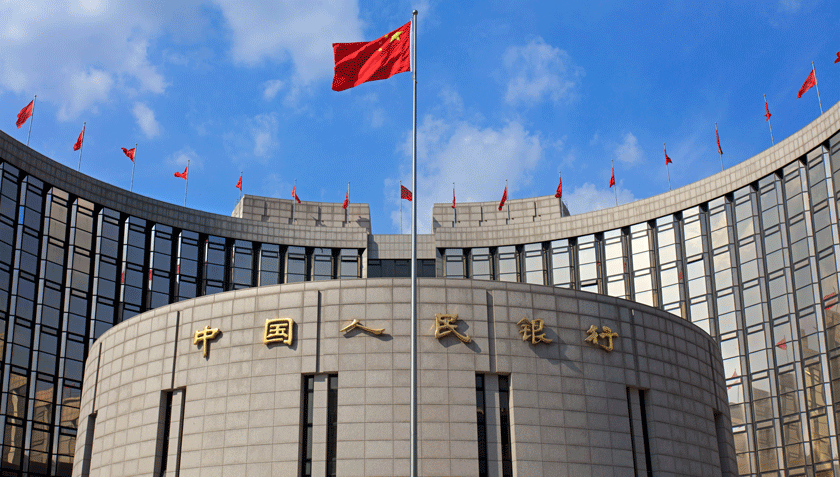By Positive Money,Sarah George
Copyright edie

Asia requires $3.1trn of annual investment to decarbonise its economies if global targets to reach net-zero emissions by 2050 are to be achieved, according to international management consultancy McKinsey. The continent contains rapidly growing economies and energy demand, while many of its countries remain heavily reliant on fossil fuels and highly vulnerable to the impacts of climate breakdown.
The private sector, left to its own devices and profit-motives, is not delivering the scale or type of investment needed to address the escalating and multi-dimensional ecological crisis.
A vast scaling up of green public investment and disciplining of private capital is therefore required to meet international climate targets and build just and sustainable economies. Central governments, fiscal policy, and industrial policy are clearly central to this task. But far less discussed is the role that central banks can play.
A key lever
Through monetary policy and regulation of the private financial sector, central banks hold immense power to guide finance away from ecologically destructive industries and towards green sectors. However, they often neglect most of these capacities, due to flawed concerns around perceived independence and market-neutrality. And yet, central banks have used ‘credit guidance’ policies to respond to crises in the past, notably when economies needed to be rebuilt in the wake of the Second World War.
Ecological breakdown poses an existential threat to human society as we know it and is already causing destruction that is hitting the world’s most vulnerable populations the hardest. We simply cannot afford for institutions as powerful as central banks to eschew any responsibility.
This is an argument we have been making for many years at Positive Money, through research and policy advocacy on ‘green central banking’. Our new report, The East and Southeast Asia Green Central Banking Scorecard, analyses and scores the progress of central banks in the ASEAN+3 grouping of countries towards aligning their policies with addressing the ecological crisis.
Each country’s central bank is evaluated for its research and advocacy work, monetary policy, financial regulation policy, and other actions which show leadership on environmental issues. After collecting policy data through literature reviews, expert consultations, and direct communications with central banks, each country was assigned a score through our framework.
We found that no central bank in the ASEAN+3 is currently taking action at a scale commensurate with the severity of the ecological crisis, with even the best performer gaining less than half of the points available in our scoring framework. However, relative progress across the 13 countries varies dramatically.
Leaders and laggards
The highest scorer is the People’s Bank of China, which has used its developmental and activist footing to spur green investment, such as by offering low-cost funding for commercial banks to extend green loans via the Carbon Emission Reduction Facility (CERF).
China’s vast economic and institutional capacities mean that it is strongly positioned to develop impactful green central banking policies. The cluster of top-performing central banks is rounded out predominantly by Southeast Asian nations – Malaysia, Singapore, Indonesia, and the Philippines – and then Japan.
Following this cluster, Thailand and the Republic of Korea find themselves in the middle of the ASEAN+3 pack, despite Korea having both the third-highest GDP and cumulative emissions.
At the other end, we find a cluster of five countries whose scores sit significantly behind the rest of the ASEAN+3 (Vietnam, Cambodia, Lao PDR, Brunei, and Myanmar), indicating they are at very early stages of exploring green central banking policies. This group also includes the countries with the lowest GDP and GDP per capita in the ASEAN+3, due to factors including legacies of colonial exploitation, wars, and marginalisation within the inequitable international monetary and financial system.
Compared to the larger economies in the region, such countries accordingly face greater constraints on their capacities to meet immediate social needs and pursue other policy goals, such as those around green central banking.
Our report reveals, therefore, a striking inequality characterising the development of green central banking in East and Southeast Asia. All central banks must rapidly strengthen their policies to mitigate ecological breakdown, but capacities to do so are not evenly distributed. Lesser-resourced countries must receive greater support – technical and financial – to develop green central banking policy frameworks from those with greater economic and institutional capacities, both within the region and beyond.
This can be established through bilateral partnerships, the ASEAN and ASEAN+3 platforms, and international frameworks such as the UNFCCC. At the same time, transformation of the international monetary and financial system is required to address its fundamental imbalances, which hamper both the monetary and fiscal policy space of many nations in Southeast Asia.
Without such changes, green central banking in East and Southeast Asia is likely to continue its uneven development, which risks certain countries being left behind amidst a wider regional green transition.
Joe Herbert is a senior researcher at Positive Money



